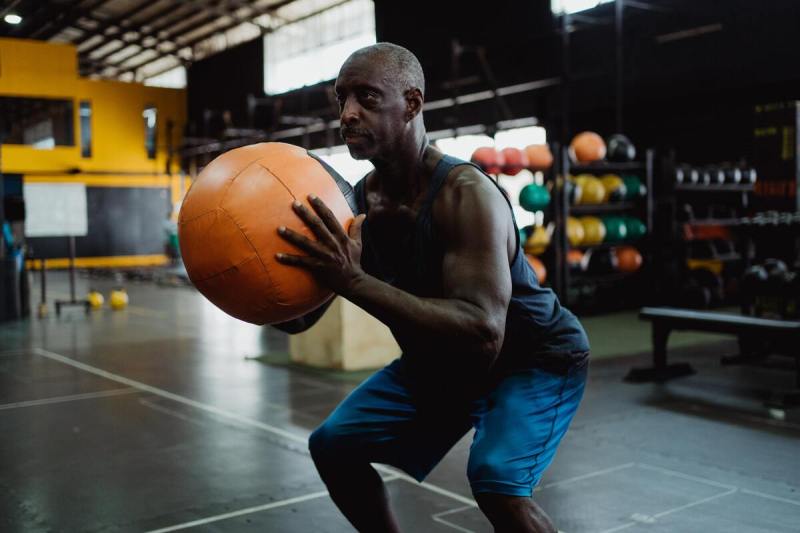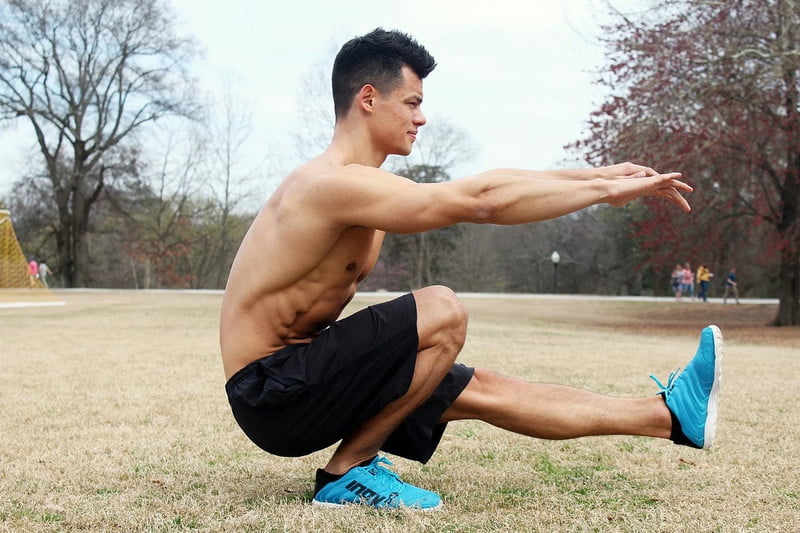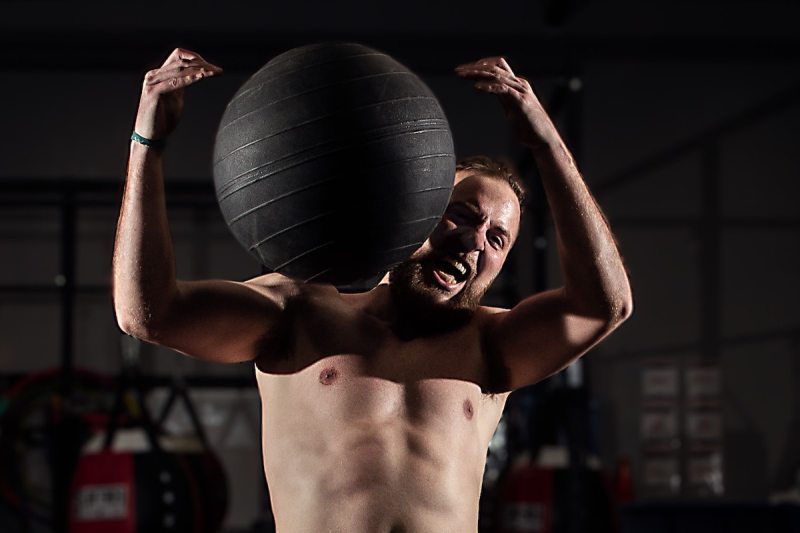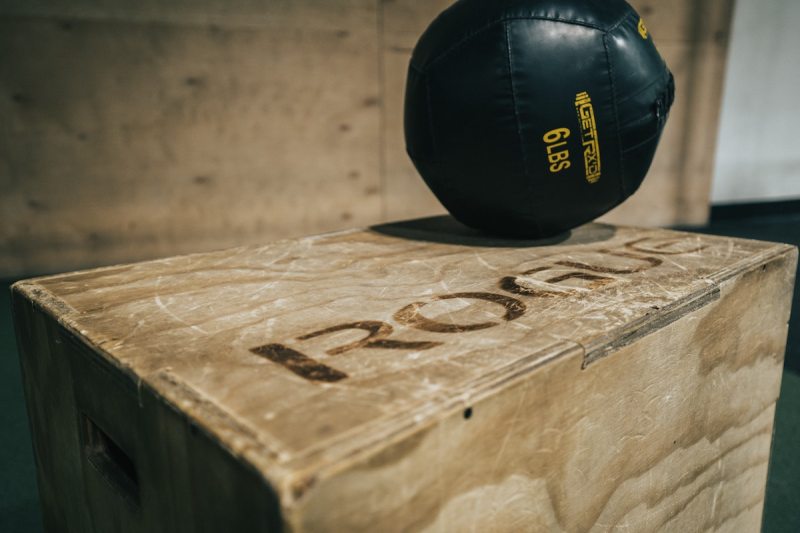
It can be easy to forget the lower body when exercising and instead only focus on improving upper body strength. Exercise and strength training should be all about balance, and this means working out the entire body and not forgetting any groups of muscles, such as those in the legs.
Leg workouts can be performed on separate days from upper body ones, and you can always get inventive with your exercises — meaning that you do not have to rely on conventional running and gym apparatus workouts for your legs. Instead, you can use other methods, such as medicine ball exercises and fitness sandbags, that can make exercising more inventive and fun.

Anatomy of the lower body
The lower body begins at the hips and ends at the toes. Like the upper body, it is made up of a complex mixture of muscles, bones, joints, tendons, nerves, and blood vessels. The knees down to the toes are sometimes referred to as the lower extremities, but even the lower extremities can benefit from exercise.
The lower body consists of the hip joint, which is attached to the pelvic bone. The femur, or thigh bone, runs downwards from this and connects to the knee joint. Below the knee, the shin bone is attached to the ankle joint, which holds the complex bones of the feet.
Some of the lower limb muscles that help to control the movements of the lower body joints include the gluteus maximus, gluteus medius, quadriceps, hamstrings, and calf muscles.

What are the benefits of training with a medicine ball?
Multiple movements
Medicine ball training is not as restrictive as weight training when it comes to movements that the body is allowed to make during an exercise session. This ensures that joints and muscles are all worked evenly, and this can help improve strength and flexibility.
Posture and balance
Medicine ball workouts are beneficial for the core, and they also encourage good posture and spinal alignment. Some traditional weight exercises can lead to an uneven distribution of weight on one side of the body, leading to straining and poor posture, as the body overworks certain muscles to compensate.
Fun exercise sessions
Barbell and dumbbell training can be a little restrictive and routine. Medicine ball training adds some fun and newness to any exercise session. This is because there are more varied, enjoyable, and versatile exercises that can be completed in groups or individually with various weighted balls.

8 lower body medicine ball exercises
1. Squats
The medicine ball squat is a good exercise for both beginners and those at a more advanced level. No matter what weight ball is used, these squats will work the muscles of the glutes, quadriceps, hamstrings, hip flexors, calves, and adductors.
Instructions:
- Pick up the medicine ball with both hands and stand up straight with your feet shoulder-width apart and toes turned out slightly.
- Keeping your back straight, push your hips back and bend your knees until your thighs are parallel to the floor.
- Straighten your legs to return to the standing starting position, and keep the ball held out in front of you at all times. It should be at chest level during a squat.
- Perform three sets of ten reps.
2. Walking lunges with overhead hold
An overhead walking lunge with a ball involves holding a medicine ball high over your head, so for safety reasons, it is best to start with a light ball. This type of lunge is good for stretching out the spine and shoulders. It also helps to build the glutes, hamstrings, quads, and calf muscles.
Instructions:
- Stand up straight with your feet shoulder-width apart
- Hold the medicine ball with your palms placed on the sides of the ball.
- Push your arms upwards until they are fully stretched out and the ball is high over your head. This is the starting position.
- Take a step forward, stop, and bend the leading leg knee to create a 90-degree angle. The other leg should also be bent at the knee at an angle, with only the toes in contact with the ground.
- Hold the position for a few seconds and then return to a standing position, with the ball still held over the head at all times.
- Then lead with the opposite leg and do exactly the same until you have taken ten steps.
- Repeat this exercise with three sets of ten steps.
3. Ball slams
Ball slams keep the core tight, stretch the shoulders and spine, and depending on the speed at which each slam is completed, they can also offer a cardio workout in addition to strengthening the shoulders, abdominals, quads, and hamstrings.
Instructions:
- Stand up straight with your feet shoulder-width apart. Place your hands on the sides of the medicine ball and lift it over your head until your arms are fully extended and straight. Make sure your elbows are facing outwards.
- In one movement, bend forwards and throw the ball hard, slamming it against the ground.
- Make sure you finish this movement with your glutes pushed outwards and your arms straight by your sides.
- Perform three sets of five to ten slams.
4. Side lunges
Side lunges strengthen the lower body and help to stretch out the spine.
Instructions:
- Stand up straight with your legs together and the medicine ball held out in front of you at chest level.
- Stretch your left leg out towards the side and bend your left knee until your thigh is parallel to the floor. The right leg should be stretched out towards the side, but the knee must not be bent.
- Hold the position for a few seconds, then return to a standing position and do the same, but this time lead with the right leg.
- Perform ten to 15 reps on each side.
5. Single-leg Romanian deadlift
A single-leg Romanian deadlift using a medicine ball is a great gentle stretching exercise that helps stabilize the core and improves balance.
Instructions:
- Stand up straight with your legs together and the ball held out in front of you at waist level.
- Hinge at the hips and reach the medicine ball toward the floor as one leg raises up behind you to help you keep your balance. The medicine ball should be held near the standing leg as it goes toward the floor.
- Pause when the medicine ball is mid-shin, and slowly come back up to standing.
- Repeat for ten reps on one side before switching to the other.
6. Pistol squats
A pistol squat helps to stretch and tone the legs. It also aids in improving balance while engaging your core.
Instructions:
- The starting position for a pistol squat is standing straight with a chair behind you.
- Hold the medicine ball close to your chest with your arms by your side, bent at the elbow.
- Lift your right foot slightly off the ground and straighten it in front of you.
- Bend your left leg until you are sitting on the chair.
- The ball should remain at chest height.
- Swap legs after ten reps and repeat for two sets.
7. Wall sit
A wall sit using a medicine ball stretches the arms and shoulders and engages the core. It also utilizes the hamstrings and glutes.
Instructions:
- Stand up straight with your legs together and your back facing a wall.
- Hold the ball at waist level.
- Press your back against the wall and push down until you are in a sitting position and your thighs are parallel to the floor and your knees form a 90-degree angle.
- While doing this, you can hold the ball outwards with your arms fully stretched out to work your upper body as well, or you can keep it against your chest.
- Aim to hold this position for at least one minute and do two to three sets.
8. Glute bridges
As the name suggests, a glute extension exercise works the glutes but also engages the core and stabilizes the spine.
Instructions:
- Lie on your back with your knees bent and feet firmly on the floor.
- Place a medicine ball between your legs and leave your hands by your sides with palms pressing against the ground.
- Squeeze your glutes and push your hips off the floor while keeping your knees bent with the medicine ball held in position between them.
- Hold the position for three seconds and then relax your glutes and return to the starting position.
- Perform three sets of ten to 15 reps.
Editors' Recommendations
- High protein fast food for a busy day: These picks won’t kill your fitness goals
- Pilates is about more than just your core — try this full-body Pilates workout
- Are you doing hammer curls the right way? Your complete guide
- 7 exercises that target the deep core (and what that actually means)
- This is the best pull day workout routine for size and strength



